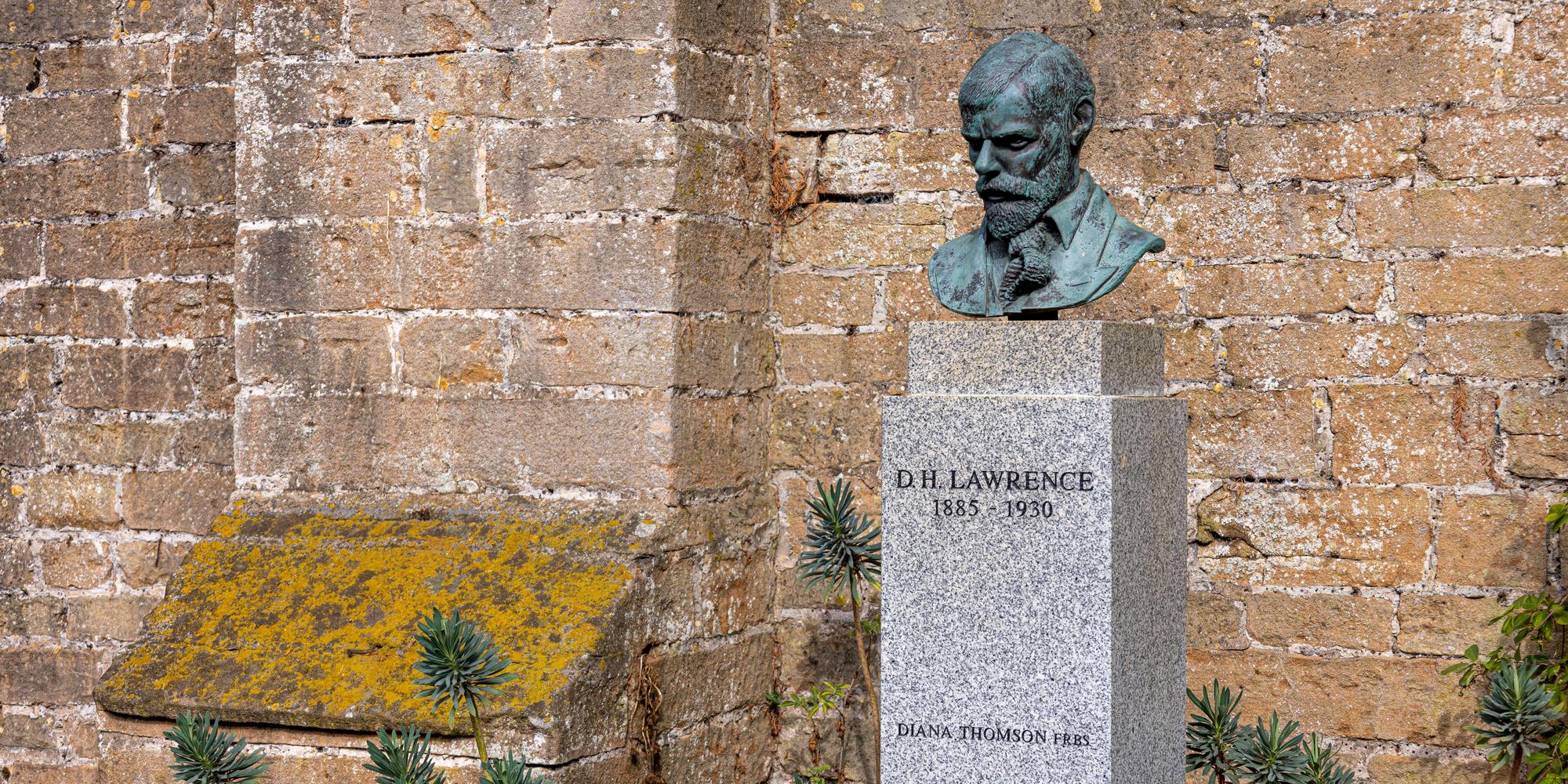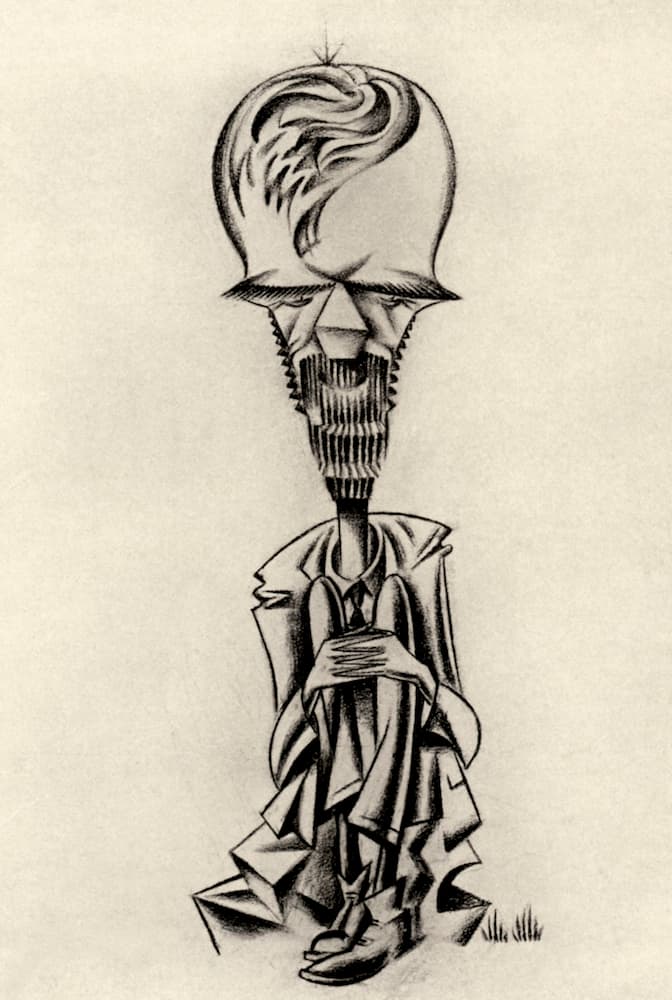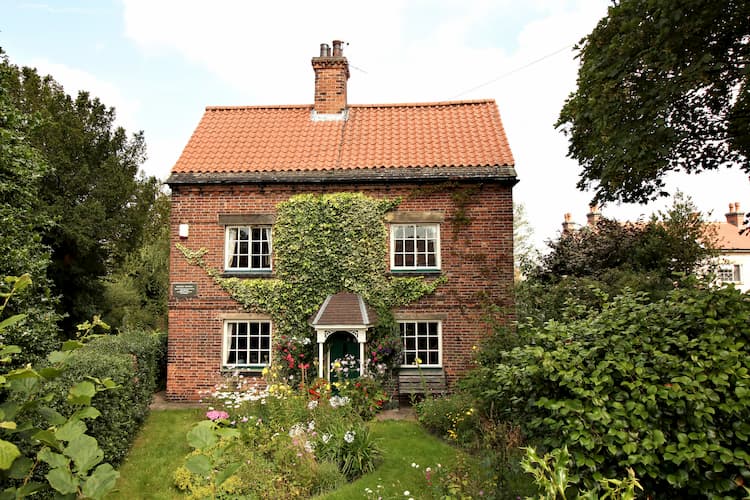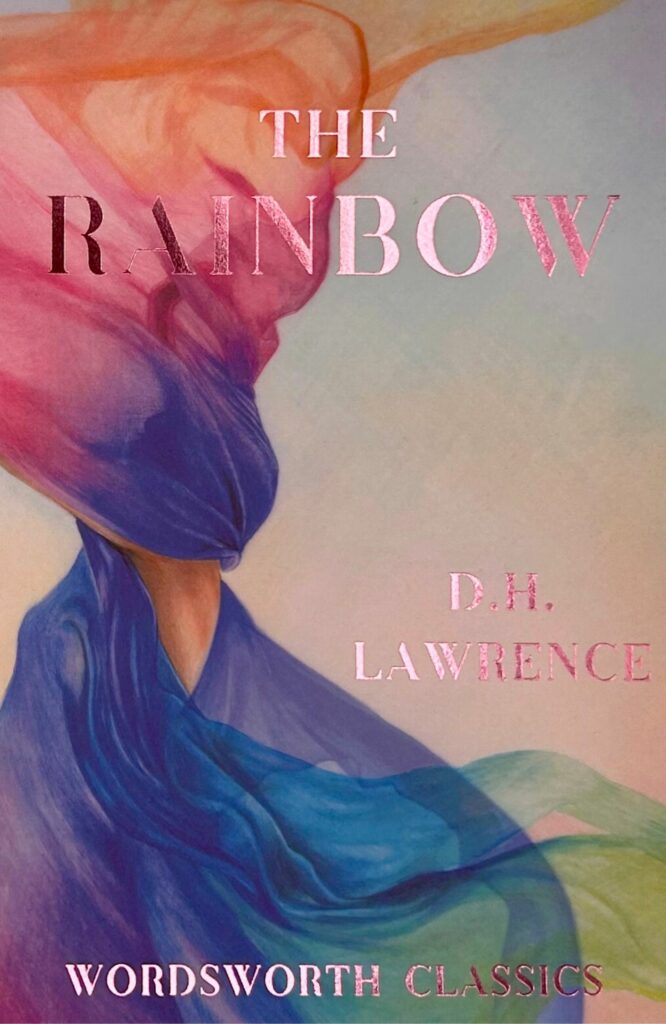
D.H. Lawrence’s ‘The Rainbow’
Like the later Lady Chatterley’s Lover, The Rainbow was initially banned for obscenity on its publication in 1915, but for only a mere eleven years. Mia Rocquemore revisits this complex novel.
D.H. Lawrence’s The Rainbow contains all the features of a Victorian story that so appeal to the critical eye of modern literature undergraduates: there are gender stereotypes, the woes of industrialisation and the transition of a nation from one age to the next. Indeed, Lawrence was well-placed to talk about such changes; born in 1885 and living in Britain until 1919, his novels, poetry and even his paintings capture the slow march of time through the mid-nineteenth century towards the beginning of the twentieth.
Born in a mining town in the Midlands, Lawrence was aware from childhood of the effects of industrialisation on Britain’s rural communities, and with The Rainbow finished during the First World War, he was publishing at a time where the devastating effects of technology and machinery on human life was becoming all too clear. The Industrial Revolution, although rarely lauded by contemporary authors and poets, was particularly abhorrent to Lawrence because of his intricate, and perhaps intrinsic, understanding of nature. In his personal letters, he describes the Surrey landscape with adoration – “the masses of gorgeous foliage, the sharp hills whose scarps are blazing with Autumn, the round valleys where the vivid dregs of Summer have collected” – and he appears to have had a rare feeling for the seasons of things: “who cares about growing old! Moonlight is as beautiful as sunlight, and night-flowers have more sweetness if less hot colour than poppies and marigolds”. Even death, according to his poem The Ship of Death is but one of nature’s transitions:
“Now it is autumn and the falling fruit
and the long journey towards oblivion.
The apples falling like great drops of dew
to bruise themselves an exit from themselves.
And it is time to go, to bid farewell
to one’s own self, and find an exit
from the fallen self.”

Caricature of D.H. Lawrence by Coia
Lawrence understood death and renewal as biological phenomena, appreciated the changing seasons of both year and life, and marvelled at the metabolising force of nature. He likewise took relationships to be alive, biological. A pencil cannot be said to have a relationship with a piece of paper, except when a writer uses them together to transmute his thoughts into written words. Nor in any real sense is there a relationship between any inanimate objects. They can be used, or can stand, in a certain relationship to one another, but the ideas of connection and feeling represented by the word can only truly exist between living beings, mutable and responsive. For Lawrence, and for his characters, real relationships can function only when this prerequisite is acknowledged and fulfilled, which for the Bragwen family of The Rainbow means maintaining their ancestral connection to the earth.
The novel begins “the Brangwens had lived for generations on the Marsh Farm”. As growing tensions pull at the legacy of the family farm, we see how the vital energy of the land, plants, flowers and animals had catalysed and nourished the bonds between them. As Britain and the Brangwens leave behind their rural roots for the industrialised modern world, their relationships, no longer earthed in the Nottinghamshire soil, break down.
The Rainbow traces the lives of three generations of Brangwens, beginning with Tom, a true farmer who resisted his mother’s attempts to make a gentleman of him through education. Having inherited Marsh Farm at just seventeen years of age after his father’s sudden death, he is uncompromisingly tied to the land. Through him, Lawrence introduces the vitalising force of nature:
‘Tom Brangwen was glad to get back to the farm, where he was in his own again… He had too low an opinion of himself. But he went about at his work on the farm gladly enough, glad of the active labour and the smell of the land again, having youth and vigour and humour, and a comic wit, having the will and the power to forget his own shortcomings, finding himself violent with occasional rages, but usually on good terms with everybody and everything.’
As the story progresses and the following generations lose their connection to the earth, these traits – humility, youth, vigour, humour, and peaceableness – are gradually corroded. Traditionally, it is the men who keep the family tied to the land. Fathers interact with their children through the earth. Fred, Tom’s brother, “was his father’s very son, the two men, father and son, were supremely at ease with one another. Fred was succeeding to the farm”. Likewise, Tom’s adopted daughter Anna “was only easy at home, where the common sense and the supreme relation between her parents produced a freer standard of being than she could find outside. Where, outside the Marsh, could she find the tolerant dignity she had been brought up in?”. Anna “loved driving with Brangwen in the trap” and regularly accompanies him to the cattle-market.
It may at first seem obvious that in a farming family bonds are likely to be forged over their shared land, labour and home, but a later parallel scene between William, Tom’s son-in-law and nephew, and his own daughter Ursula, helps to emphasise the importance of nature as a medium for inter-generational relationships. Ursula joins her father to help him plant potatoes, and whether due to her own inability or his failure to explain the task, the project ends with Will telling her, ““You didn’t help me much”. The child looked at him dumbly. Already her heart was heavy because of her own disappointment. Her mouth was dumb and pathetic. But he did not notice, he went his way.”
Despite Will’s admittedly flawed parenting techniques, it is clear that Ursula does not have the same intuitive grasp of her relationship to the land as former generations of Brangwens had done: “she was always tormented by the unreality of outside things. The earth was to walk on. Why must she avoid a certain patch, just because it was called a seed-bed? It was the earth to walk on. This was her instinctive assumption”. She does indeed become the first major character whose daydreams of leaving home for adventures abroad come close to reality. She travels to London and beyond, and almost sets off for India before the end of her engagement to Anton Skrebensky. Ursula herself speaks in the same breath of the loss of both family and land:
“Repeatedly, in an ache of utter weariness she repeated: “I have no father nor mother nor lover, I have no allocated place in the world of things, I do not belong to Beldover nor to Nottingham nor to England nor to this world.”
She discovers that life away from her ancestral land is not one of vitality; although liberating, it does not invigorate. In fact it is only at home, in the triumph of nature over artifice, that she once again feels hopeful, at the very end of the novel:
‘She saw in the rainbow the earth’s new architecture, the old, brittle corruption of houses and factories swept away, the world built up in a living fabric of Truth, fitting to the over-arching heaven.’
Land is inheritance, not only of a valuable asset, but of everything passed down from one generation of Bragwens to the next: knowledge, values, customs, love. The erosion of the rural culture uproots the family’s connection to the earth and breaks these generational bonds. The miscarriage Ursula suffers at the end of the novel, although read by some as the ‘birth of the self’, seems ultimately to seal the fate of her line, at least within the remit of The Rainbow.
The same calamitous effect of industrialisation and detachment from nature is shown to be true for “the blackened colliers trooping from the pit-mouth”. The miners’ job it is to pillage the land, but it is often they who find themselves the victims, sometimes fatally so, in their fulfilment of this task. “Colliers hanging about in gangs and groups, or passing along the asphalt pavements heavily to work, seemed not like living people, but like spectres”. Anonymous and unimportant, any one of them does just as well as a father or husband to their families as another; when one collier dies, his widow will “be getting married again directly. One man or another—it does not matter very much. They’re all colliers.” It is as though the “proud, demonlike” coal mines that Ursula so hates have destroyed not only vegetative life but also the natural energy that sustains family life, maintaining certain timeless and universal consistencies across generations.
In addition to the intergenerational upheaval, Britain’s transition from a rural to an industrialised society also disrupts romantic and sexual relationships within the Brangwen family. Despite the numerous fluctuations their marriage undergoes, Tom and his wife, Polish refugee Lydia Lensky, largely enjoy a healthy relationship. “The intimacy and nakedness of marriage”, although trying at times, brings them together and their union is described in terms that are both spiritual and profoundly natural: “it was the entry into another circle of existence, it was the baptism to another life, it was the complete confirmation”. Soon after Lydia meets Tom and he proposes to her, the intense depression she had been living under is alleviated, again in a deeply organic way. The universality of nature, which neither time nor place can hold, brings the refugee immeasurable comfort:
“But a sunshiny day came full of the scent of a mezereon tree, when bees were tumbling into the yellow crocuses, and she forgot, she felt like somebody else, not herself, a new person, quite glad. But she knew it was fragile, and she dreaded it. The vicar put pea-flower into the crocuses, for his bees to roll in, and she laughed. Then night came, with brilliant stars that she knew of old, from her girlhood. And they flashed so bright, she knew they were victors.”

Church Cottage, Cossall
The later marriage of Lydia’s daughter, Anna, whom Tom gladly adopts as a girl, and William Brangwen, is also described in natural terms. Will proposes to Anna while they sit arranging sheaves of corn together in the moonlight, and during the honeymoon period after their wedding they completely isolate themselves from the world in their cottage near Marsh Farm, “buried like a seed in darkness”. Long-term their relationship faces more tumult that Tom and Lydia’s, mainly caused by their selfishness. Will feels entitled to his wife’s undivided attention and affection, whereas Anna is content only when she is pregnant or taking care of her many children. Each expects to receive; neither has learnt to give. Despite spending their time divided between church and the land, the lesson of ‘a time to sow and a time to reap’ never reaches them.
Anna and Will do, however, sustain their marriage without calamity, with numerous offspring and with mutual respect. The final important sexual relationships presented in The Rainbow are those of their daughter Ursula, whose story, although the shortest in years, occupies around half of the novel. Her most infamous relationship, almost entirely contained within a chapter entitled ‘Shame’, occurs between herself and an older woman. At the time of publication homosexuality was of course taboo, if not illegal, but in addition to all the societal criticisms that can be read into the prominent lesbian affair, it is important to bear in mind that such a relationship is inherently non-generative.
Their brief affair is, however, broken off and Ursula strikes up an affair with the young Lieutenant, Anton Skrebensky. The pair fall in love while Ursula is preparing for her final school exams, and after the intervening years in which he is abroad during the Boer War, they rekindle their romance and even take a summer holiday together to the continent. Despite being taken as husband and wife during this trip, Ursula “seemed to ignore what he said about marriage. It did not come home to her”. Indeed, “at the thought of marriage and living with Skrebensky amid the European population in India, her soul was locked and would not budge. She had very little feeling about it: only there was a deadlock.”
As a result Skrebensky leaves for his posting in India without her, after which Ursula discovers that she is pregnant. Although she writes to him with promises of a future together, she loses the child and a letter later arrives informing her that he has married the daughter of his commander. Critics have often read the scene in which Ursula gets trampled by horses, resulting in her miscarriage, as a hallucination, owing to various literary features and a general tendency to prefer psychological readings of a character’s subconscious as a means of explaining their actions. Whether hallucinatory or literal, the horses evidently represent a powerful organic, animal vitality. Ursula, who gloried in the idea of breaking “from the confines of all the life she had known”, who was tempted by the mysterious notion of “London, through the grim, alluring seethe of the town”, and who travels regularly by that greatest symbol of the Industrial Revolution, the train, finally finds out that the force of nature cannot be resisted.
Upon seeing once more the eponymous rainbow in the novel’s final paragraph, Ursula undergoes the same transformative and invigorating experience that her grandmother Lydia had decades earlier on that “sunshiny day”. The sight of the rainbow and nature’s promise of renewal and purification fills her with hope that “new, clean, naked bodies would issue to a new germination, to a new growth, rising to the light and the wind and the clean rain of heaven”.
The Rainbow is a spectacularly complicated novel, with a huge host of dramatis personae who sometimes even share names. D. H. Lawrence was too sophisticated an author to simplify emotions, relationships or events in order to convey a message. In fact, the immersive nature of his writing is built upon the realistic human nature of the characters, who may be kind but act in malice, or loving but become enflamed with rage. It would therefore be easy to find anecdotal exceptions to any broad statement about his characters, their evolutions and their motivations. Nonetheless, in the mind and works of D. H. Lawrence, a correlated and indeed causal relationship exists between the dwindling importance of nature and the tie to ancestral land, and the breakdown of family cohesion. Through the generations of Brangwens whose stories he tells, he presents this decline in grave and sometimes tragic terms. And yet in his sublime descriptions of the land, he assures the reader that there is always hope to be found in nature, life-giving, forever changing but ever-present.
Main image: Bust of D. H. Lawrence at Newstead Abbey, Nottinghamshire. Credit: John Eccles / Alamy Stock Photo
Image 1 above: Caricature of D.H. Lawrence by Coia. Credit: Lebrecht Music & Arts / Alamy Stock Photo
Image 2 above: Church Cottage, Cossall, the previous home of DH Lawrence’s fiancé, Louie Burrows. In the book it became Yew Cottage and Cossall became Cossethay. Credit: Gavin Gillespie / Alamy Stock Photo
For more information on his life and works, visit The D.H. Lawrence Society
Our edition of The Rainbow is here
D.H. Lawrence’s ‘The Rainbow’
Books associated with this article
